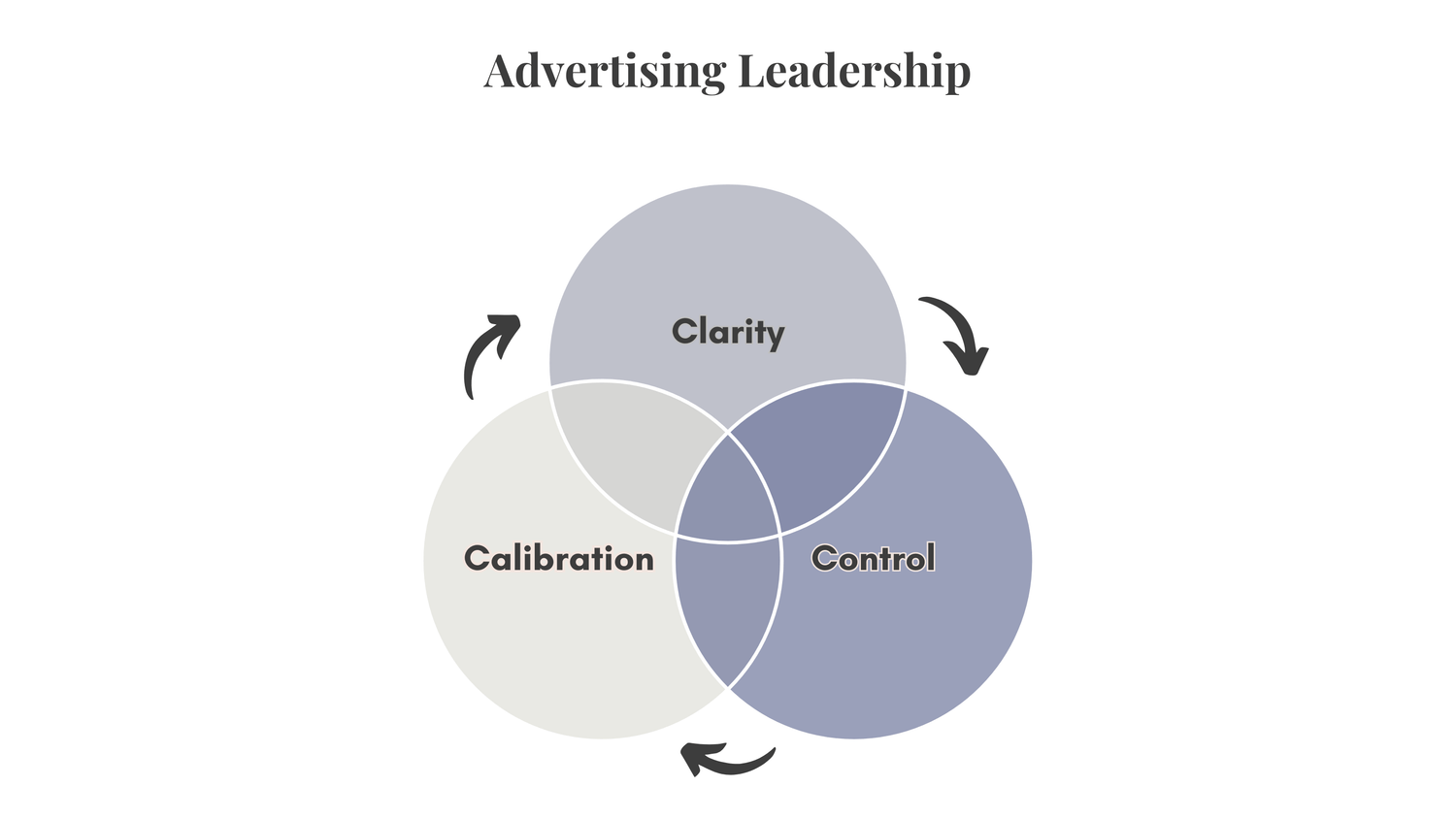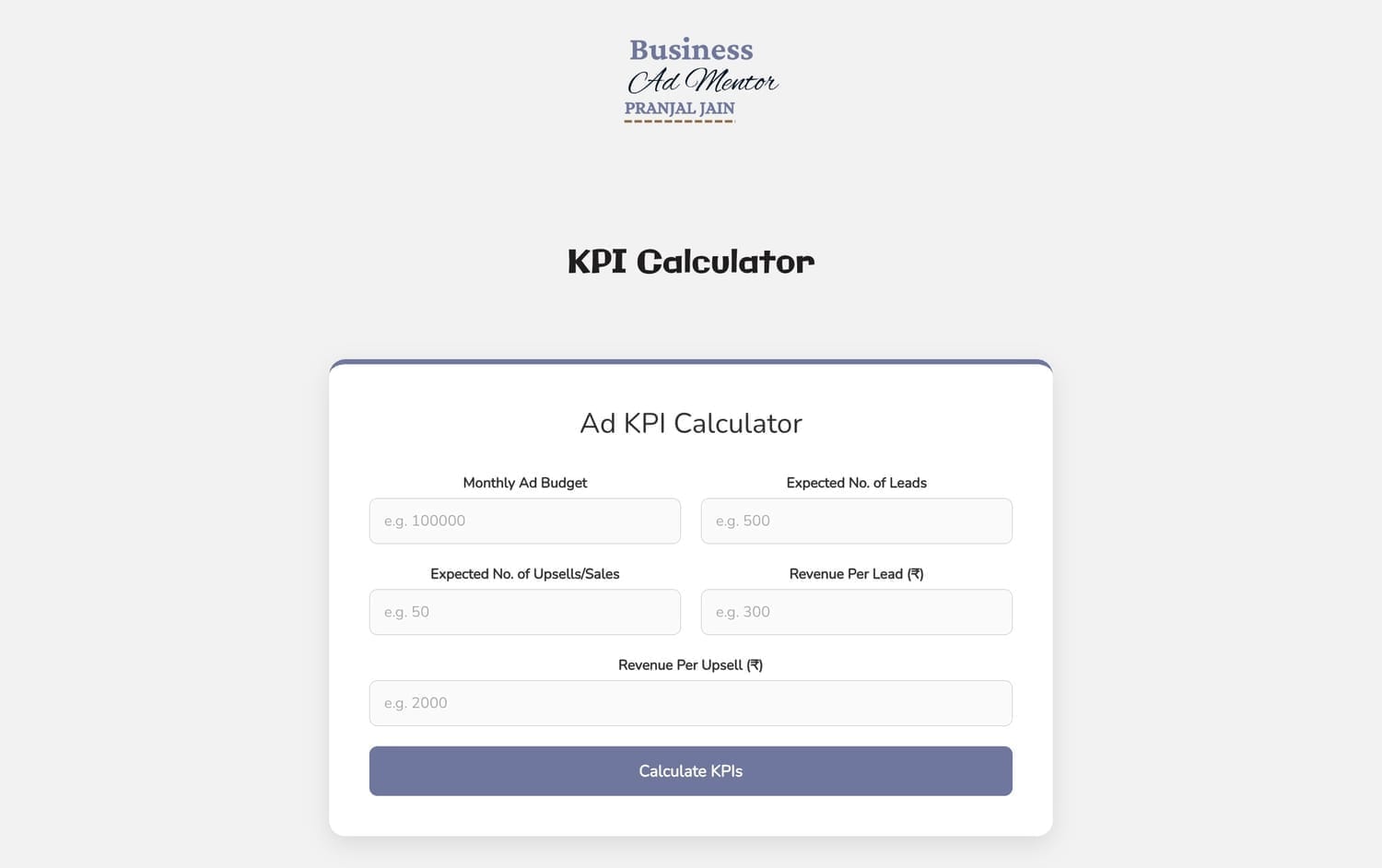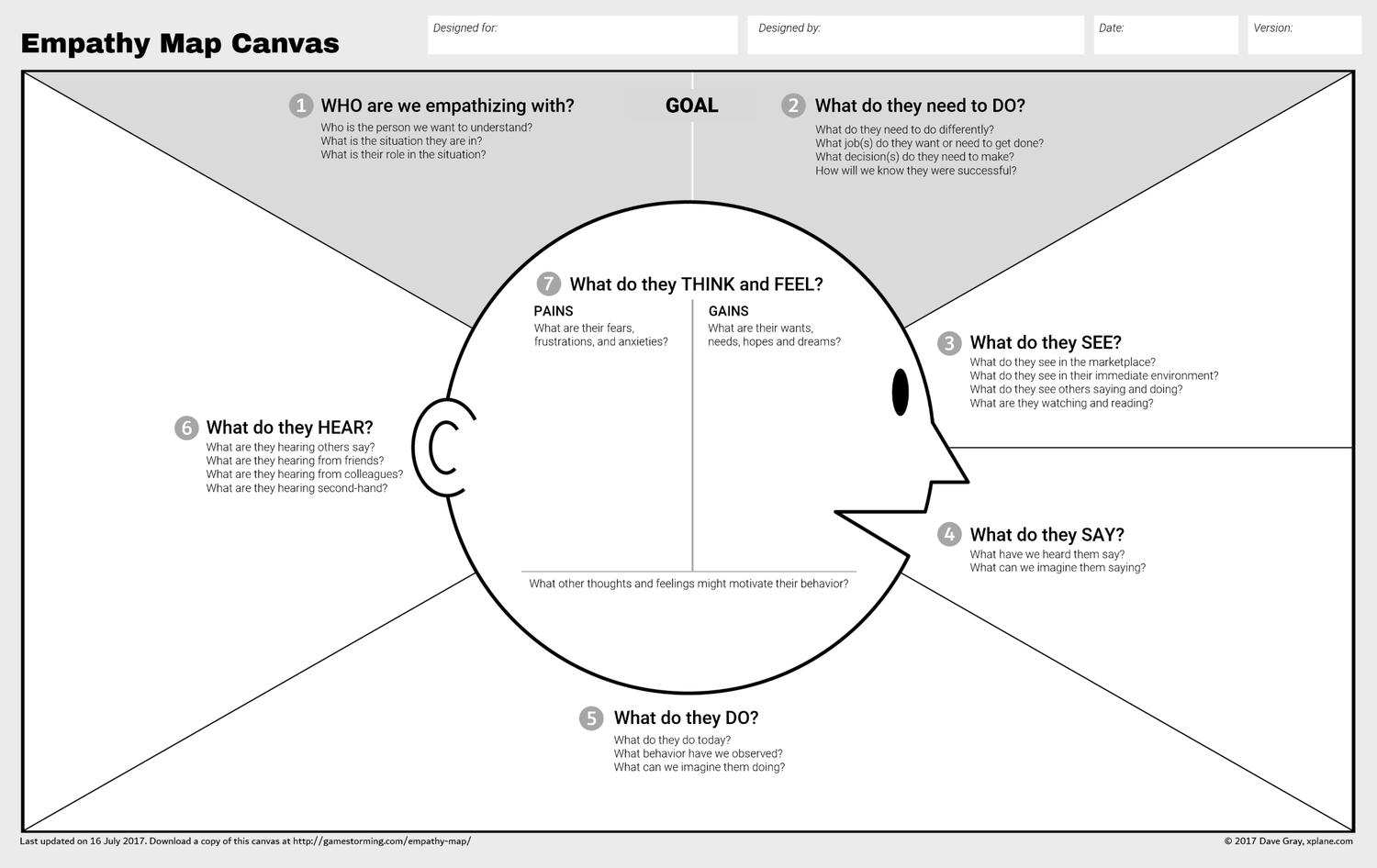

How Founders Can Finally Take Charge of Their Advertising
Picture this: Your ad campaigns are live. Your team is “on it.” And yet, your numbers aren’t moving. You’ve hired the experts. Raised the budget. Checked every box.
But still, no clarity. And that’s when the doubt creeps in. 👀
What if the real problem is…
that you stepped away too far?
Here’s the truth: Advertising doesn’t just need a budget - it needs you as a leader. And this kind of leadership from founders? I call it: Advertising Leadership.
It's what turns scattered campaigns into a focused growth system.
It’s how you go from asking for ROAS reports to knowing exactly what’s broken and how to fix it.
And No, you don’t have to do it all yourself.
But you do need to lead the people who do.
Because without you at the strategic centre, no ad plans will work the way they should.

This isn’t about managing campaigns.
It’s about leading the strategy behind them.
Because most founders think they’ve delegated advertising
But what they’ve really done is disconnect from their ads.
That’s the gap no one talks about.
And it’s exactly why your results feel stuck, no matter how much you're spending.
In the next section, you’ll see what ad leadership actually looks like, how you can take control of it, guide your team without micromanaging, and finally get your ad campaigns to reflect the clarity of your business vision.
KEY TAKEAWAYS
Ad performance problems aren’t always tactical; they’re often leadership GAPs.
You can’t outsource strategy. You need to lead it, even if you’re not managing day to day.
If you’ve delegated without direction, your team ends up spending on ads to test what you already know.
Ad leadership means asking the right questions, not running the campaigns yourself.
Clarity at the top drives clarity in your metrics, your team, and your revenue.

See How Beyond Advertising Myths Can Help You Lead Your Ad Strategy
Myths - shattered.
Ad Leadership - made simple.
NeuroAdvertising - built to win your market.
This book shows you how to stop relying on outdated tactics and start leading your ad strategy like a founder.
One book with everything you need from Business Ad Mentor, in one powerful read.
TABLE OF CONTENT
The Core Elements of Strategic Ad Leadership
Start with Breaking the Myths
Set up the Right KPIs
Guide the Messaging
Ask the Right Questions
Lead with Scalable Mindset
What Is Advertising Leadership?
Ad leadership is when you, as the founder, take ownership of the strategy behind your advertising without running the ads yourself.
It’s not about knowing how to use ad platforms. It is about knowing what your business stands for, what your customer needs to believe, and how your message needs to land.
Ad leaders shape the direction, guide the messaging & define what success looks like. But most founders do not lead ads this way. They delegate too fast and too far.
Their teams are left running campaigns without the one thing they need the most: clarity.
And when there is no clarity at the top, teams rely on testing to figure things out.
They test angles. Test offers. Test strategies. Because no one ever told them what the business truly stands for or who they are really trying to win.

That’s where ad leadership comes in.
When you show up with the strategic core, your team gets clarity & they spend less on testing.
Now they’re building on the foundation you’ve already set.
This is where data starts validating direction, and your ads start to sound like your business. It's about the direction that’s directly aligned with your business vision.
Why Delegating Without Direction Fails
Most founders delegate their advertising because they have too many responsibilities. They believe it’s the expert’s job now. And in many ways, it is.
The team knows how to set up campaigns, manage budgets, and run ads. But they still need direction from the top.
Delegation works only when it’s paired with leadership.
Without it, the team has no choice but to figure things out on their own by spending your money.
What happens next is a long cycle of testing.
They test audiences, offers, messaging, and funnels.
Not because they don’t know what they’re doing, but because no one told them what already worked or what already failed. And so they start from zero, solving problems that the founder has already lived through.
This is where timelines stretch.
This is where budgets leak.
And this is where founders begin to doubt whether ads even work.

Delegating without direction doesn’t just slow down results, but it also disconnects your team from your ad strategy. They’re doing the work still they’re building blind. And that blind spot is exactly why your campaigns aren’t reaching their potential.
Most founders don’t see this happening until much later. They’re looking at performance. They’re watching metrics. But they’re not looking at the root problem - the lack of input that should have guided the team from the start.
That’s why ad leadership matters. It fills the gap that pure delegation leaves behind.
You don’t need to run the campaigns, but you do need to shape the thinking behind them because when your team is building with direction, they’re not just spending to learn, they’re now spending to scale.
The Cost of Founder's Disconnect in Advertising
When founders step too far back from advertising, it doesn’t just create confusion; it reshapes the entire system in ways that are hard to spot until it’s too late.
You look at the dashboards. The numbers look fine. A few sales come in. ROAS might even appear decent. But something remains off.
The product doesn’t seem positioned the right way. The ads don’t sound like the business, and somewhere in your gut, you know that this isn’t how you want to reflect your brand.
This is what disconnection is.
It’s not a metrics problem. It’s a leadership gap.
The campaign gets built, but it doesn’t carry the weight of your thinking.
The offer is live, but it’s not being explained the way you’d sell it.
And the longer you stay silent, the more your team has to assume & test. They keep testing to fill your missing direction & learn from ad spent to find what works.
Right Now, you're not leading the strategy,
You're reviewing deliverables you had no hand in shaping.
So, by the time you step back in, you'll be responding to output that was built without your insight and that delay is expensive.
Not just in ad spend but in time, traction, and opportunity.
This is how clarity at the top gets lost.
Your business starts showing up in the market without its full depth.
Without its nuance. Without you.
And that’s when advertising becomes misaligned.
Polished, but ineffective.
Consistent, but forgettable.
It even sounds fine, and might even convert a little,
But it doesn’t drive the expected growth because it’s not grounded in your strategy.
That’s what ad leadership exists to solve.
What Ad Leadership Actually Looks Like
Ad leadership isn’t about reviewing every campaign or critiquing creatives line by line. It’s about setting the kind of foundation your team can actually build on. You don’t have to be hands-on in the platforms, but you do have to be hands-in with the thinking.
This shows up in three places: clarity, control, and calibration.

Clarity means your team knows what they’re aiming at and why it matters. Not just ROAS, but the real strategic outcome.
Are you repositioning? Warming up a cold segment? Proving a new angle in the market? If they’re guessing, you’re already behind.
If they’re clear, execution moves faster and hits harder.Control is where you shape the story. You’re not micromanaging the execution, but you are setting the direction.
Does this speak to what your buyer believes? Are we framing the offer in a way that makes sense in the real world? Are we leaning into the reasons people already buy, or making up new ones?
If you don’t steer the narrative, someone else will.Calibration is where it compounds. You’re not reacting to numbers, you’re reading the room. You know when you’re still learning, when it’s time to scale, and when the campaign is off-track.
You ask better questions. You catch misalignment early. And instead of debating whether ads are “working,” you’re leading the team to make them work better.
That’s what ad leadership actually looks like.
Not babysitting tasks. Not stepping in too late.
Just being close enough, early enough, to set the pace and keep the system aligned.
It’s not more effort. It’s better timing.
And when you get that right, everything under you moves faster, with less assumptions, fewer resets, and campaigns that actually sound like your business.
The Core Elements of Strategic Ad Leadership
Ad leadership isn’t something you bring in when results start to dip. It’s what sets the direction before anything even goes live. It’s how you make sure your campaigns don’t just run, but actually move the business forward. When you lead like this, you stop solving problems after the fact and start shaping them before they happen.
It starts with breaking the myths.
The ones that waste time and energy. That the algorithm will figure it out. That more spent will magically bring more results. That creativity alone can carry a weak strategy. These beliefs pause you from entering into the leadership role. They send you in the wrong direction.

When you lead, you understand the main concepts of advertising, you will be able to understand. conversations with you advertising teams better & instead of figuring it all by themselves, now your teams can start building up over your shared insights.
Next is setting the right KPIs.
The phase-specific targets aligned to overall business vision, that do make sense for where the campaign is. In the beginning, you need to know if the signals are useful. Later, you need to know if what worked can hold up at scale.

Your team can track the numbers, but you give these numbers a meaning. And that meaning is what lets them act with clarity in mind.
Messaging comes next, and it’s critical.
Because this is where most campaigns sound fine but fall flat. The job here isn’t to wordsmith headlines. It’s to make sure the core idea behind the ad actually reflects how people make decisions. What belief has to shift for someone to act? What truth needs to be said that others won’t touch? Your team can shape the copy, but only you carry the full context of what makes your customer move. That insight needs to show up early.

Then comes asking the right questions.
Not the surface-level stuff after the results are in. The ones that change the direction of the work before it’s out in the world. What’s the data actually telling us? What are we assuming that might not be true anymore? What decision needs to be made right now, not two weeks from now? You’re not there to approve. You’re there to guide how the team thinks about progress.

And finally, you lead with scalability in mind.
Because the goal isn’t to launch a one-time win. It’s to build a system that compounds. When something clicks, you ask what needs to happen to make it repeatable. When something misses, you pull the learning and keep the momentum. That’s how growth starts to stack. That’s how advertising becomes a real engine, not a series of scattered attempts.

This is what strategic ad leadership actually looks like.
You don’t need to do more. You just need to lead better.
And when you do, the entire system starts to move with you.
How to Step In Without Micromanaging
By now, you know what it takes to lead. You’ve seen how campaigns drift when you’re absent. You’ve seen how your clarity becomes the system your team builds on. You’ve seen how much strategy depends on what only you can bring to the table.
But that doesn’t mean you need to live inside the workflow.
Leadership doesn’t mean sitting in Slack all day or jumping into every brainstorm. It means showing up where the real decisions get shaped. You step in early. You make the objective clear. You define the voice that actually reflects the brand. And then you step back, letting your team do what they do best, with a real strategy instead of guesswork.
You’re not replacing your team. You’re equipping them.
Because when they have the context, the conviction, and the compass, they don’t wait around for approvals. They don’t second-guess every draft. They move with confidence. And the creative stays grounded in what actually matters.
That’s the difference between managing work and leading strategy.
Micromanagement happens when clarity is missing. But when the direction is strong, when the story is sharp, when the goal is understood, there’s no need to hover. The team has what they need to build fast, course-correct early, and stay aligned as they grow.

So no, you don’t need to write the ads.
But you do need to show your team what the ads are supposed to do.
And once that’s clear, your job isn’t to monitor. It’s to lead and then let go.
That’s not just how you stay involved. That’s how you scale.
Towards Growth: Building Your Ad Leadership System
Ad leadership doesn’t end after one strategic kickoff. If you want to build campaigns that actually compound over time, you need a system. One that keeps your insight at the center, without requiring you to manage everything day to day.
That system starts with your upfront direction.
You step in at the beginning to make the purpose of the campaign unmissable. The goal is never just "drive sales." It’s to create belief, shift perception, open a new market, double down on what’s already working. That clarity becomes the blueprint. The message, the offer, the audience—none of it happens in isolation anymore. It all starts from the foundation you’ve set.
But once that’s done, you don’t need to linger.
Your job isn’t to hover. It’s to step back while the team builds, keeping space for execution but not silence. You stay connected through the right checkpoints.
A weekly pulse to stay close to how the campaign is landing.
A monthly review to see what’s moving the needle and what’s lagging behind.
And in those moments, your job is not just to receive reports. It’s to guide the room.
If something feels off, you don’t ask why the numbers are low—you ask what insight is missing.
If things are working, you don’t just celebrate. You ask, “How are we amplifying this?”
And if the answer isn’t sharp, you course-correct. Not to take over, but to lead.
This is where leadership becomes a rhythm.
Upfront clarity. Strategic distance. Sharp review.
You’re not reacting. You’re steering.
You’re not micromanaging. You’re building a system that carries your thinking through every layer of execution.
Because the point isn’t to be involved all the time.
It’s to be involved in the moments that matter.
When that rhythm is in place, your campaigns stop living in a silo.
Your team starts operating with your insight built in.
And your advertising becomes not just something you spend on, but something that compounds because you led it.
This is what true ad leadership looks like in motion.
A system with your strategy at the center.
A team that builds with direction, not guesswork.
And a rhythm that keeps your business growing without constantly resetting the wheel.
That’s how you scale your advertising.
Not by doing more. By leading smarter.
Conclusion
If you’ve made it this far, you already know the truth most founders miss.
Your ads don’t need more tactics. They need more of you.
Not in the platforms. Not in the copy docs. But in the thinking that shapes every campaign before it begins. Because when your team builds without that, no amount of budget or expertise can fix what’s missing.
That’s the cost of disconnection.
But once you step into ad leadership, not as a taskmaster, but as the strategic center everything starts to move with more clarity. The message sharpens. The data starts to mean something. The creative stops guessing and starts reflecting on what you actually stand for.
You’re not doing more. You’re finally doing what only you can.
You’re guiding the belief behind the campaigns.
You’re bringing the insight no one else can access.
You’re setting the direction that lets your team move without drift.
And that’s what drives scale, not more spending, but better alignment.
Ad leadership isn’t an extra job. It’s the part of the job you can’t delegate.
Because no one else has your context. No one else sees what you see.
Now it’s time to lead that strategy with precision, and build the kind of ad system your business deserves.
Read Beyond Advertising Myths and take back control of your ad strategy.
This book gives you the full system: how to lead ads like a founder, how to guide your team without micromanaging, and how to turn your campaigns into an engine for growth.
Inside, you’ll learn how to:
Break the biggest myths that keep ad results stuck
Lead strategy without getting buried in execution
Build a creative that reflects your positioning and your psychology
Ask the questions that make teams smarter and faster
Scale ads with your insight built into the system
This isn’t theory. It’s what I’ve used to coach hundreds of high-growth founders and it’s now all in one book, built to help you take charge starting today.
And finally, build the advertising system that grows with you...



